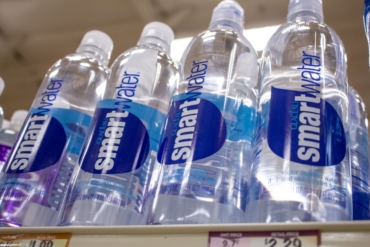Refined sugars and caffeinated drinks are not cornerstones of a healthy diet. Yet, they’re standard aid-station fare in endurance events. If you use them right (and not too much) can these ‘fuels’ help you race better?

If you’re like me, a product such as Red Bull doesn’t scream “healthy.” Neither does soda, M&Ms, potato chips, Mike&Ikes candy, or cookies. Yet, every aid station I’ve ever pulled up to in the middle of an ultramarathon is replete with just that: Junk food.
It’s the opposite of what I’ve been told to eat as a runner. What’s more, it’s a welcome sight, and I usually grab the candy and Coke by the handful before heading off for more miles.
That’s not what I eat during the week, to be clear. As an athlete, refined sugars and empty calories would hurt my performance; moreover, they would make me feel terrible and affect my health. But for a race-day boost, all bets are off — abandoning preconceived notions of nutrition seems to work in the short-term. And I’m hardly alone in this thinking.
Race-Day ‘Fueling’
Angela Naeth, who has won a dozen Ironman 70.3 races and finished a full Ironman in under nine hours, takes it a step further, swearing by Red Bull on race day and on long training days. (Full disclosure: she’s sponsored by the energy drink company, though she drank the stuff before a connection with the company came.)
At first glance, it seems strange that a pro triathlete whose livelihood depends on controlling every aspect of health and performance possible would chug a drink full of sugar, with more caffeine than Coke, and controversial (if misunderstood) ingredients like taurine.
But the key, Naeth said, is to use it sparingly, and strategically. “General nutrition and my fueling plan are very different if you were to put them side-by-side,” she said. “My [daily] nutrition is very clean eating — vegetables, fruit, nuts, seeds, lean meats, legumes, and some dairy.”
Her race food? “My fueling plan consists of simple sugars, fluids, and electrolytes, all key ingredients for high-performance on race day.”
Affect Of Junk Food During Race
This concept isn’t new. Long before GU and its counterparts put pre-prepared gels into ready-to-eat packets, elite marathoners like Frank Shorter and Kenny Moore would famously guzzle flattened Coke for a mid-race boost.
Marathons take longer than 90 minutes to run, and our bodies generally only store about 90 minutes’ worth of glycogen, so some supplemental sugar is necessary to avoid bonking.
This was anathema to me as a young cross-country runner. My high school coach had all but banned soda during the season.
Naeth continued, “When not working out, all my food choices are focused on high nutrients,” she said. “[But] for optimal training and recovery, race fuel is required.”
Performance Booster?
She began drinking Red Bull regularly as “race fuel” years ago. “My first pro race [the 2008 Boulder Peak Olympic-distance triathlon] was delayed almost 90 minutes, and my pre-race coffee was dwindling,” Naeth said. “A friend was carrying a Red Bull, and I asked if I could have it. With 45 minutes to race start, I downed it, and… I ended up winning the race.”
But when it comes to ingesting sugars for endurance sports, not all carbohydrates are created equal, said Stephanie Howe, a PhD in exercise physiology and nutrition. Howe won the 2014 Western States Endurance Run 100-miler, and placed third in 2015. She has a unique lens as a PhD/athlete.

“What you want is multiple transportable carbohydrates to enhance absorption across the gut,” Howe said. “The ideal fuel is a 2:1 ratio of maltodextrin (glucose) to fructose. This allows for absorption to be 1.8-2 grams per minute, whereas glucose alone is about 1-1.2 grams per minute.”
In other words, grabbing sweetened sports energy products isn’t the best fuel, or at least not the most bang for your buck.
Howe said most sports energy products use maltodextrin to improve taste and to be easier on the stomach, which may make them a preferable source of energy.
“If you can only take small sips or bites of a product, it’s way less effective than a product [where] you can get 200 to 300 calories per hour,” she said.
Careful With Caffeine
Howe cautions against excessive caffeine use mid-activity, even the kind of well-portioned ingestion Naeth practices during the latter parts of a race. “There is an ideal amount, and above that you can experience lots of problems.”
That “ideal” mark? Depends on how habitually you drink caffeine, as well as a litany of other factors that affect your tolerance, like your weight.
If you drink coffee or tea regularly, “using [caffeinated] gels or caffeinated beverages is good,” Howe said. “I advise athletes to start with the un-caffeinated or lower caffeinated gels and switch into the higher caffeinated gels later in the race. Starting with caffeine and then weaning off is usually not a good idea.”
She cautions a bit extra against extreme caffeine intake mid-race. That can include Red Bull.
The effects of too much caffeine on the body’s sympathetic nervous system, which controls your body’s “fight-or-flight response,” and which is stimulated by caffeine “can wreak havoc on your body during a race,” Howe said. “The amount of caffeine in gels or coke is appropriate. Above that, I’d caution an athlete” to watch what they drink and eat.





